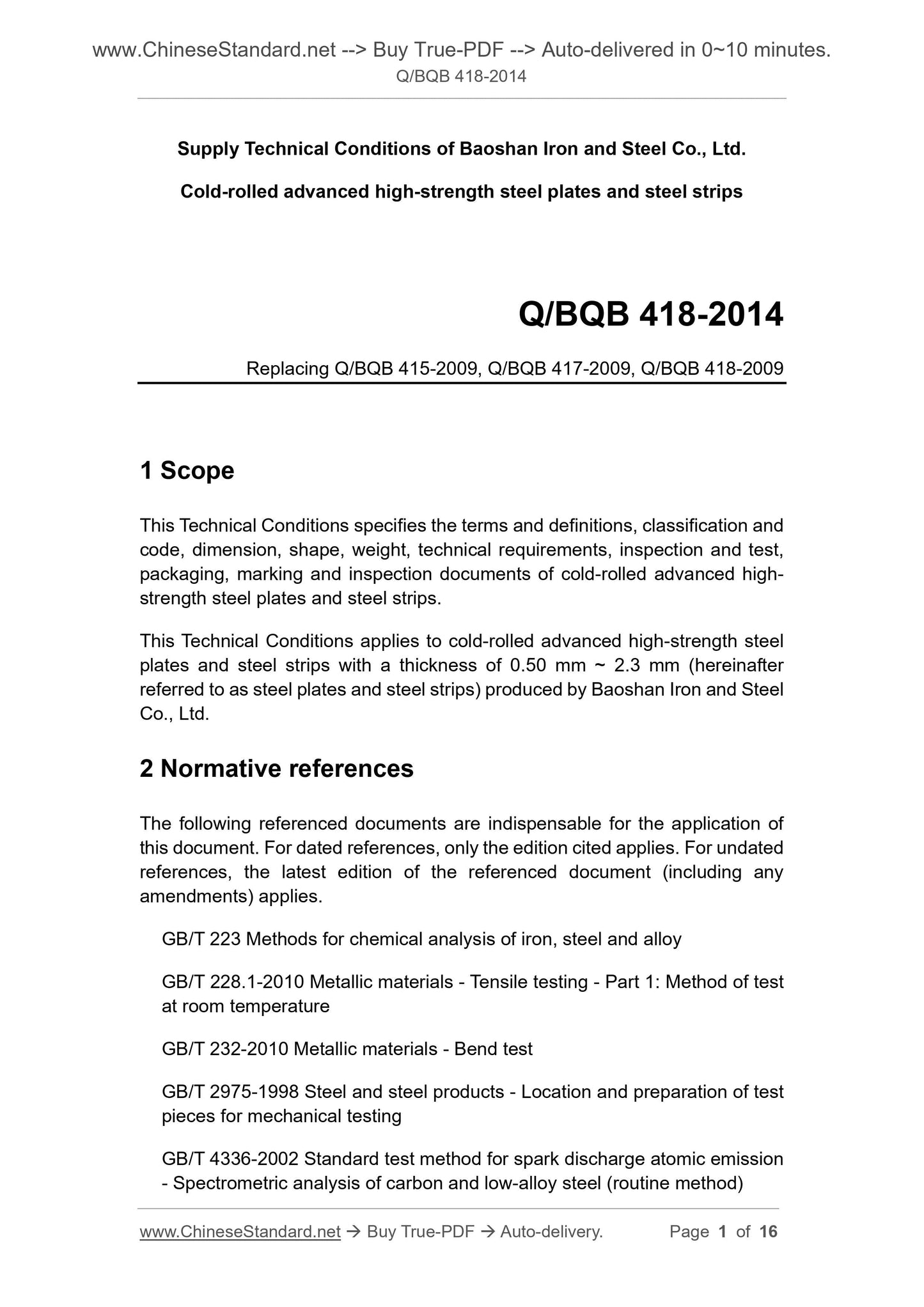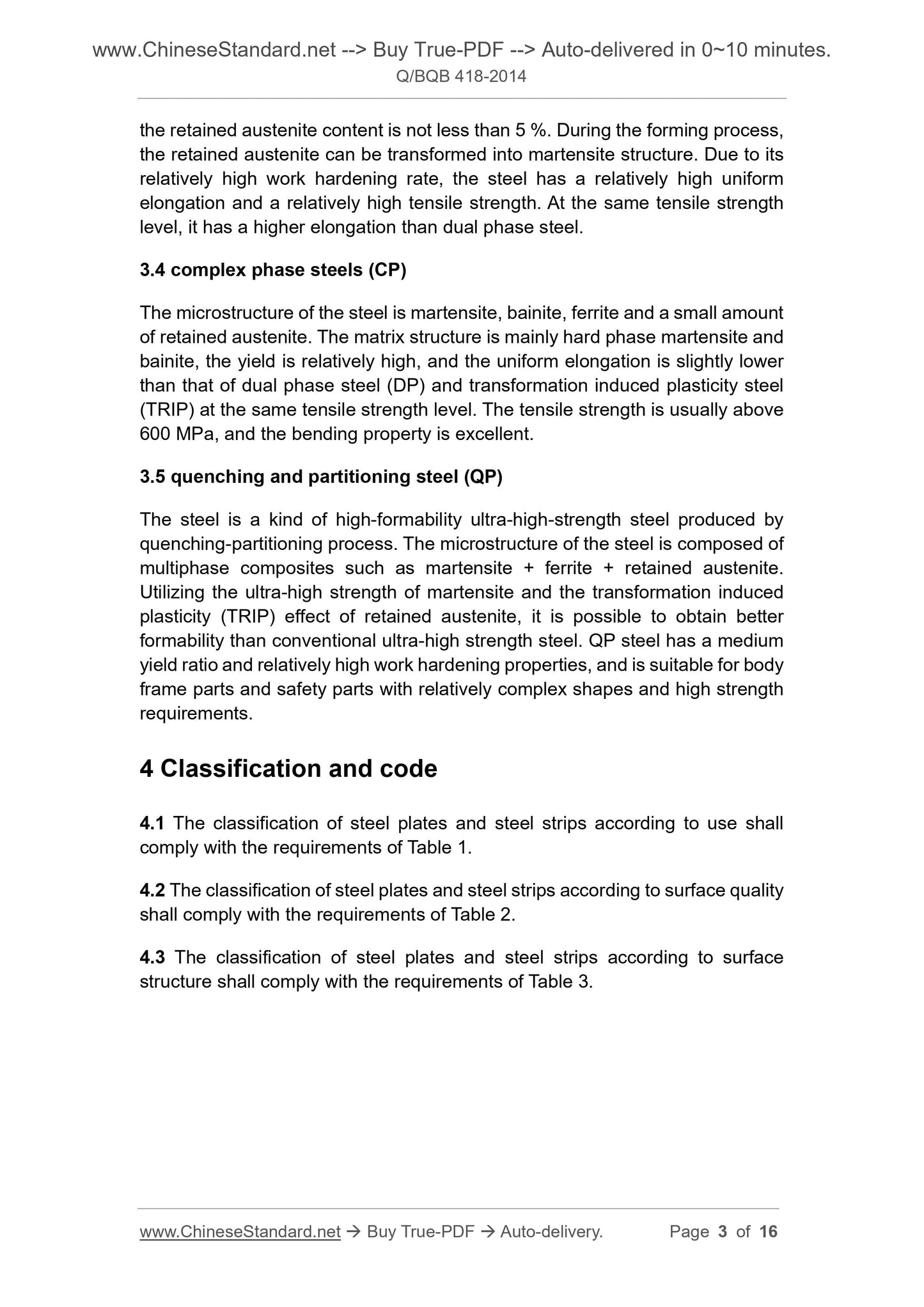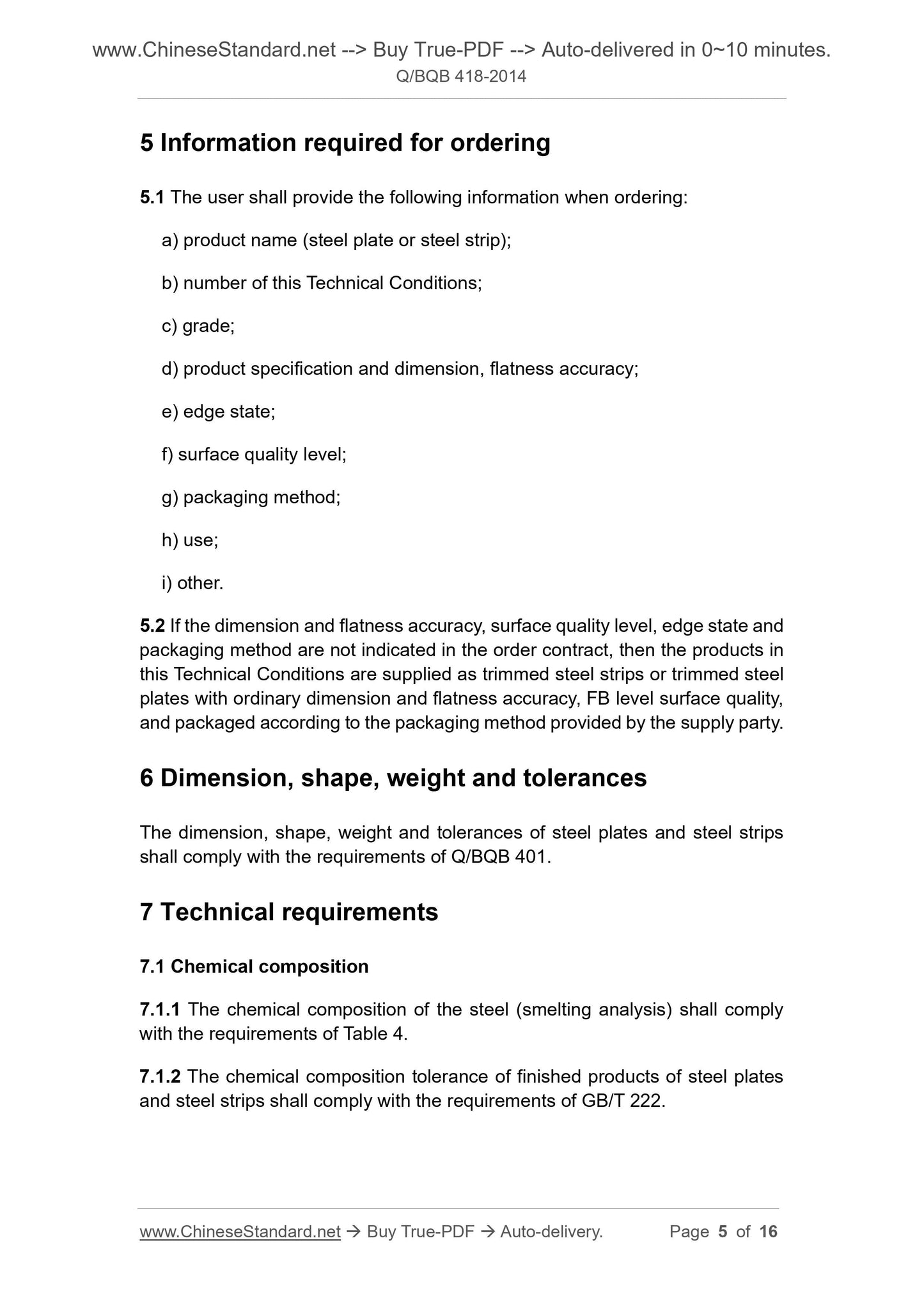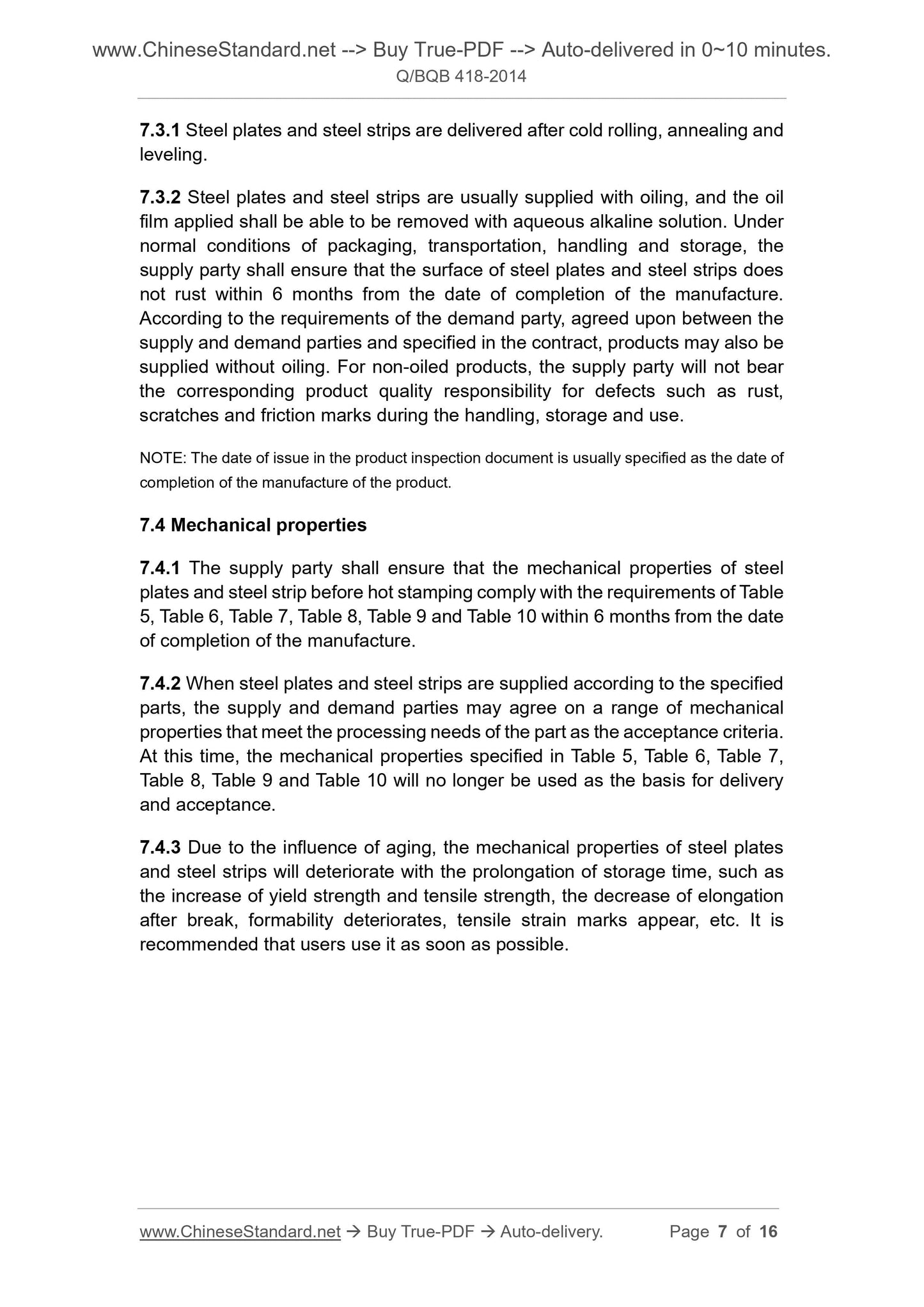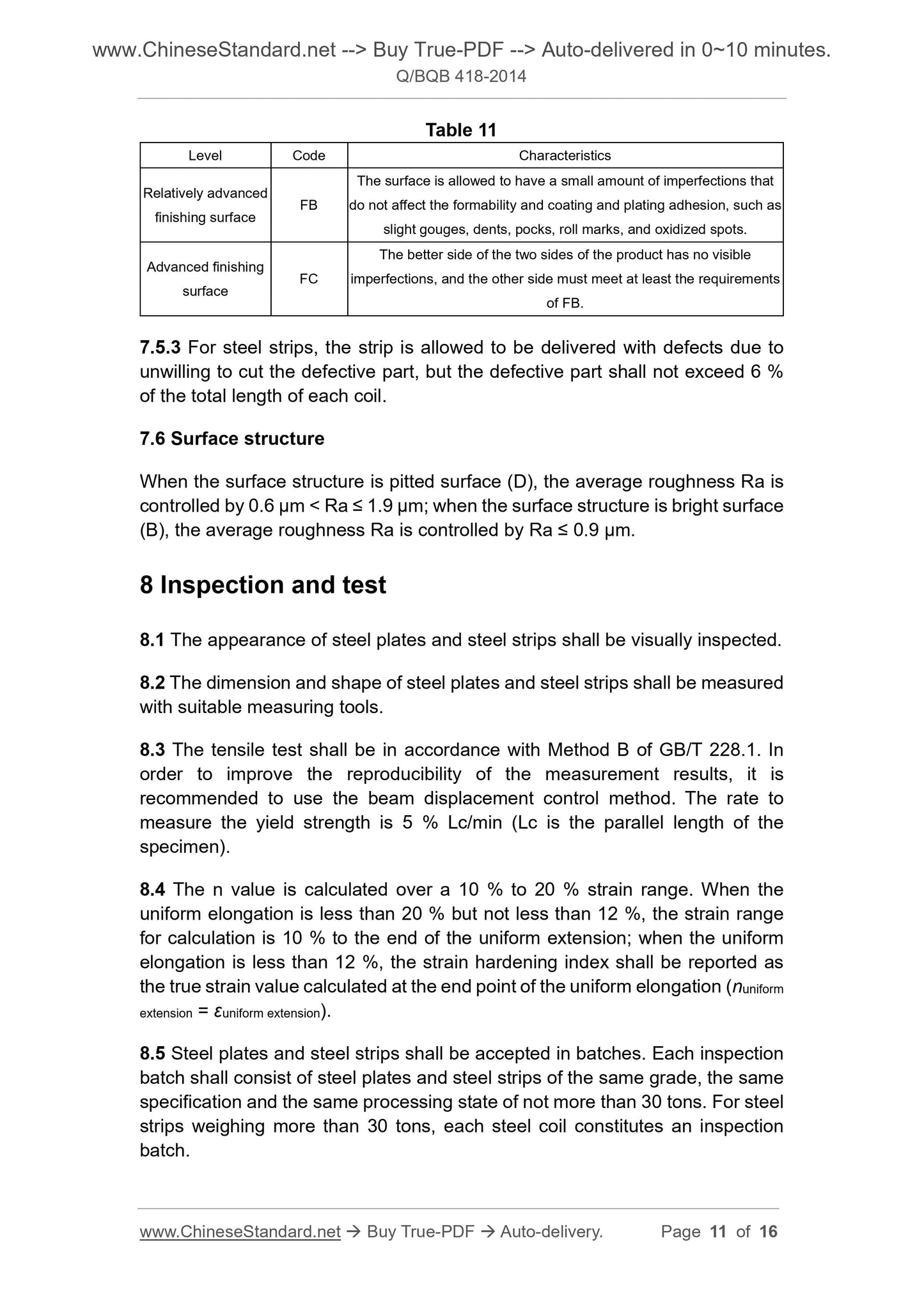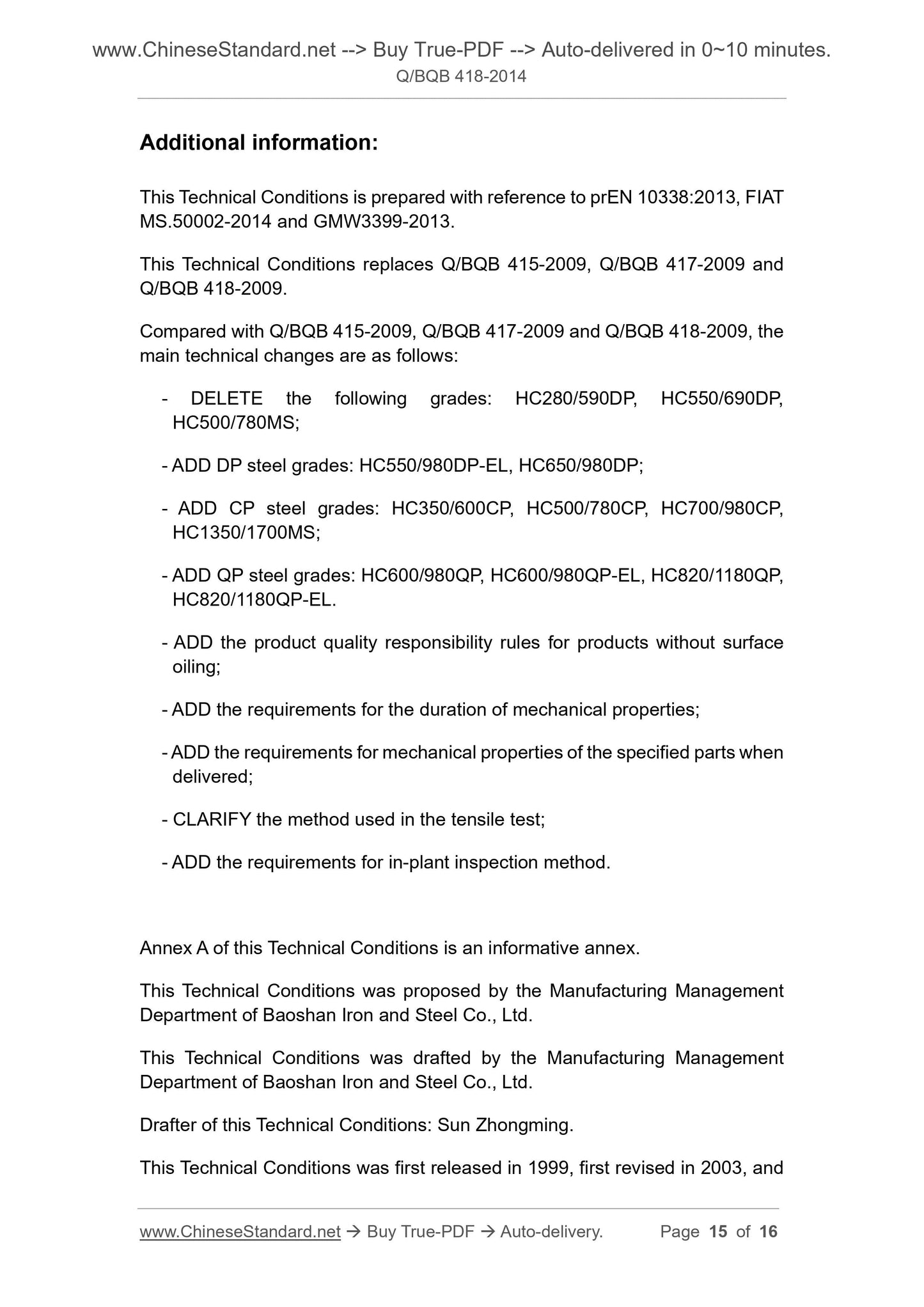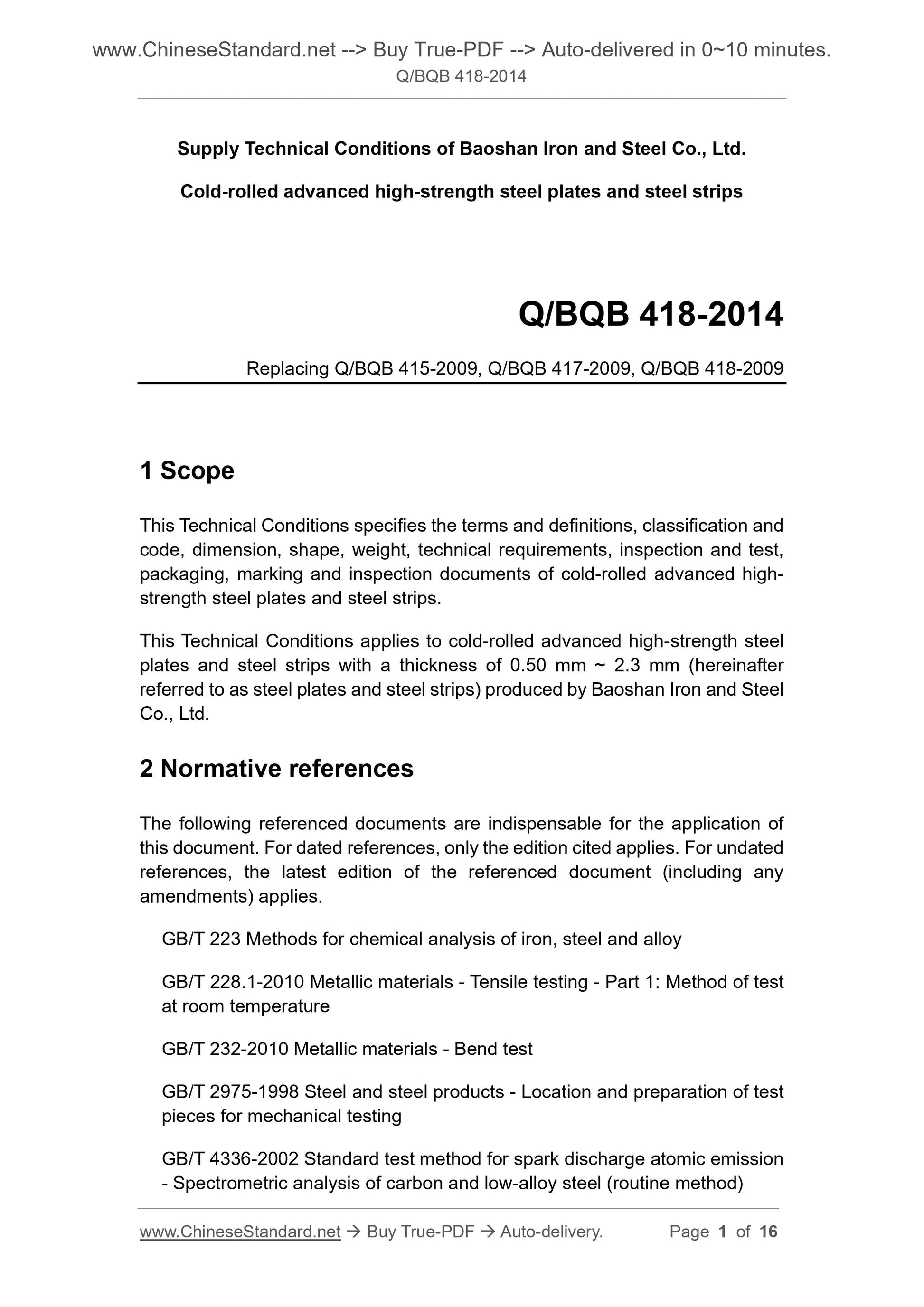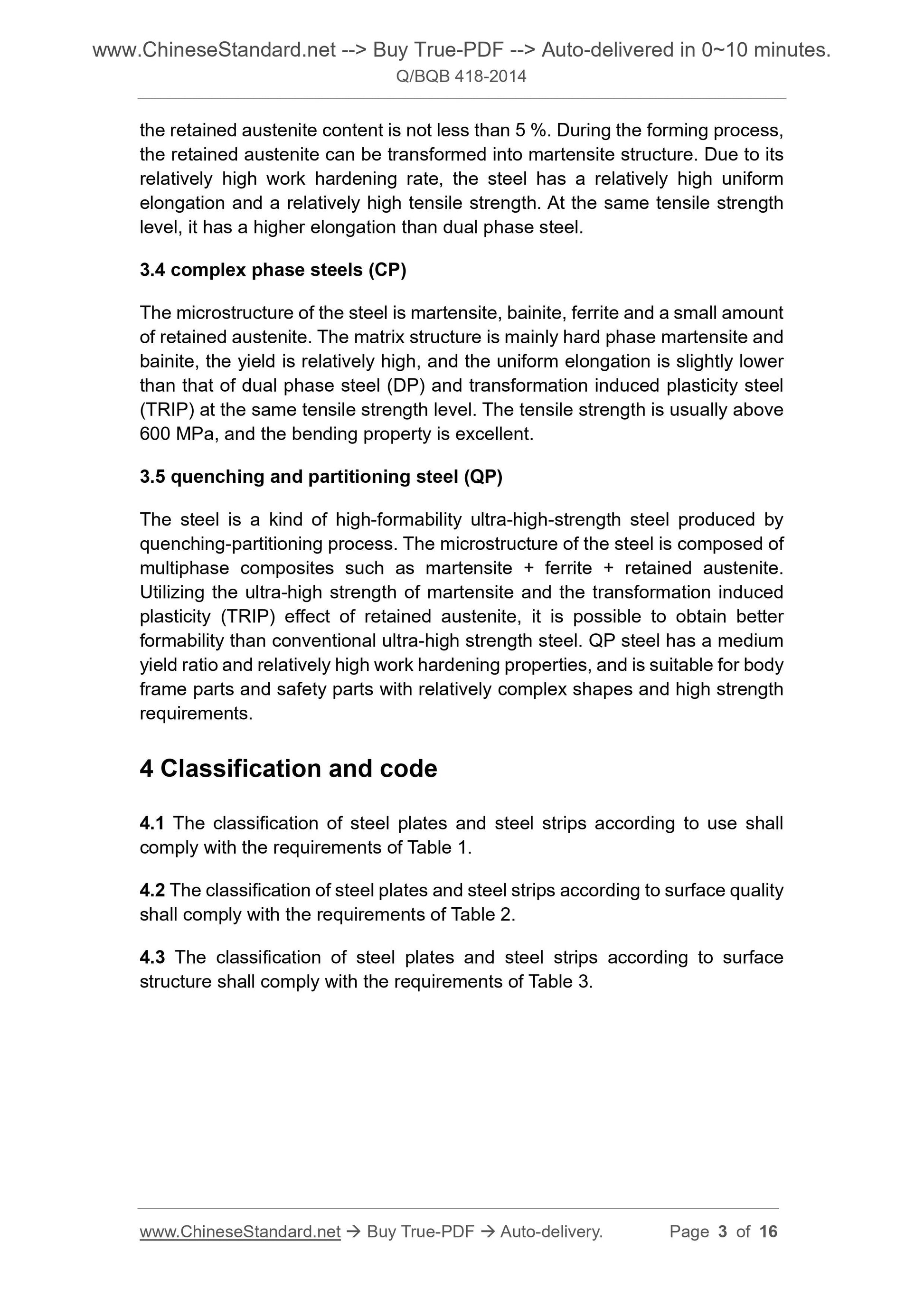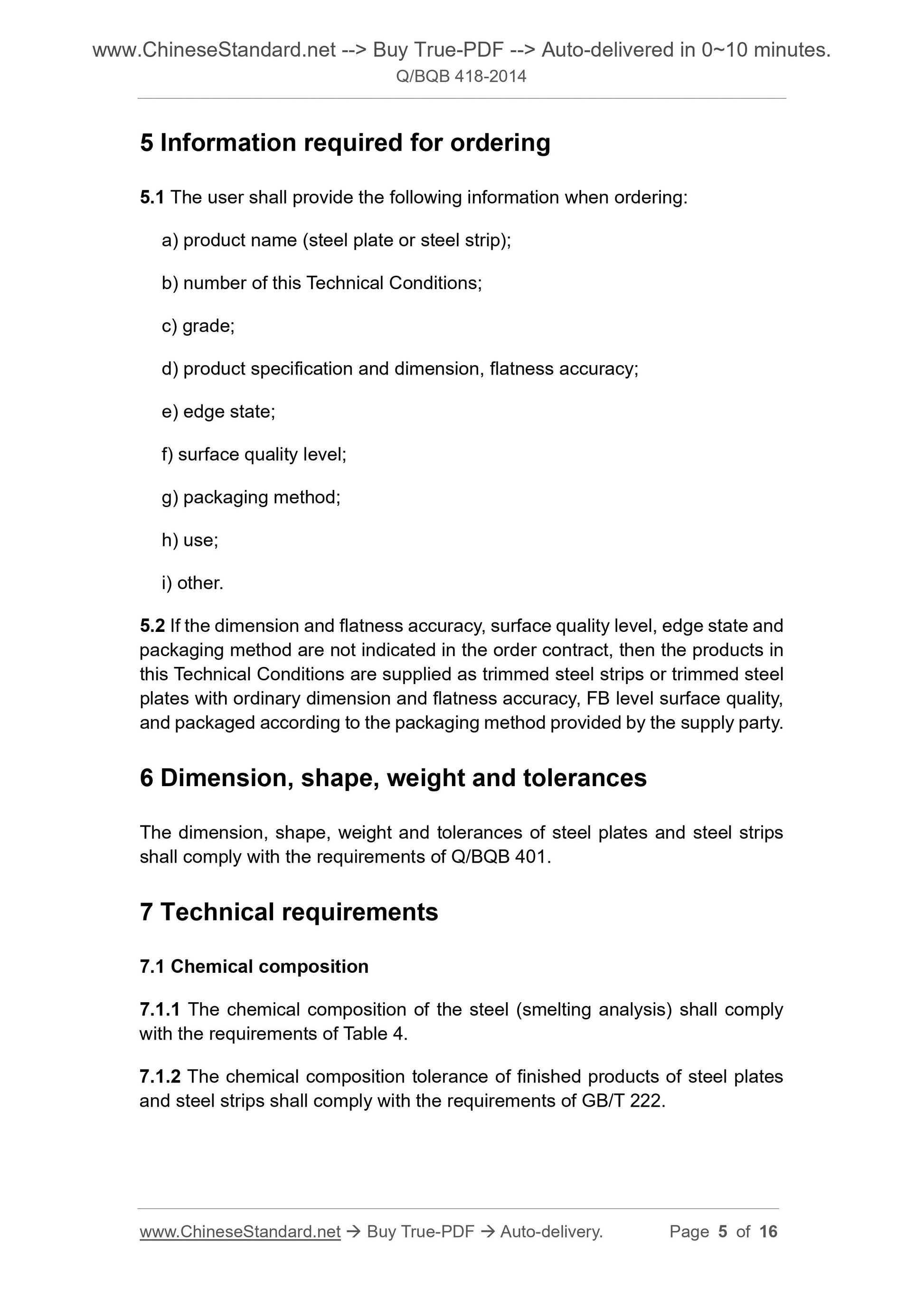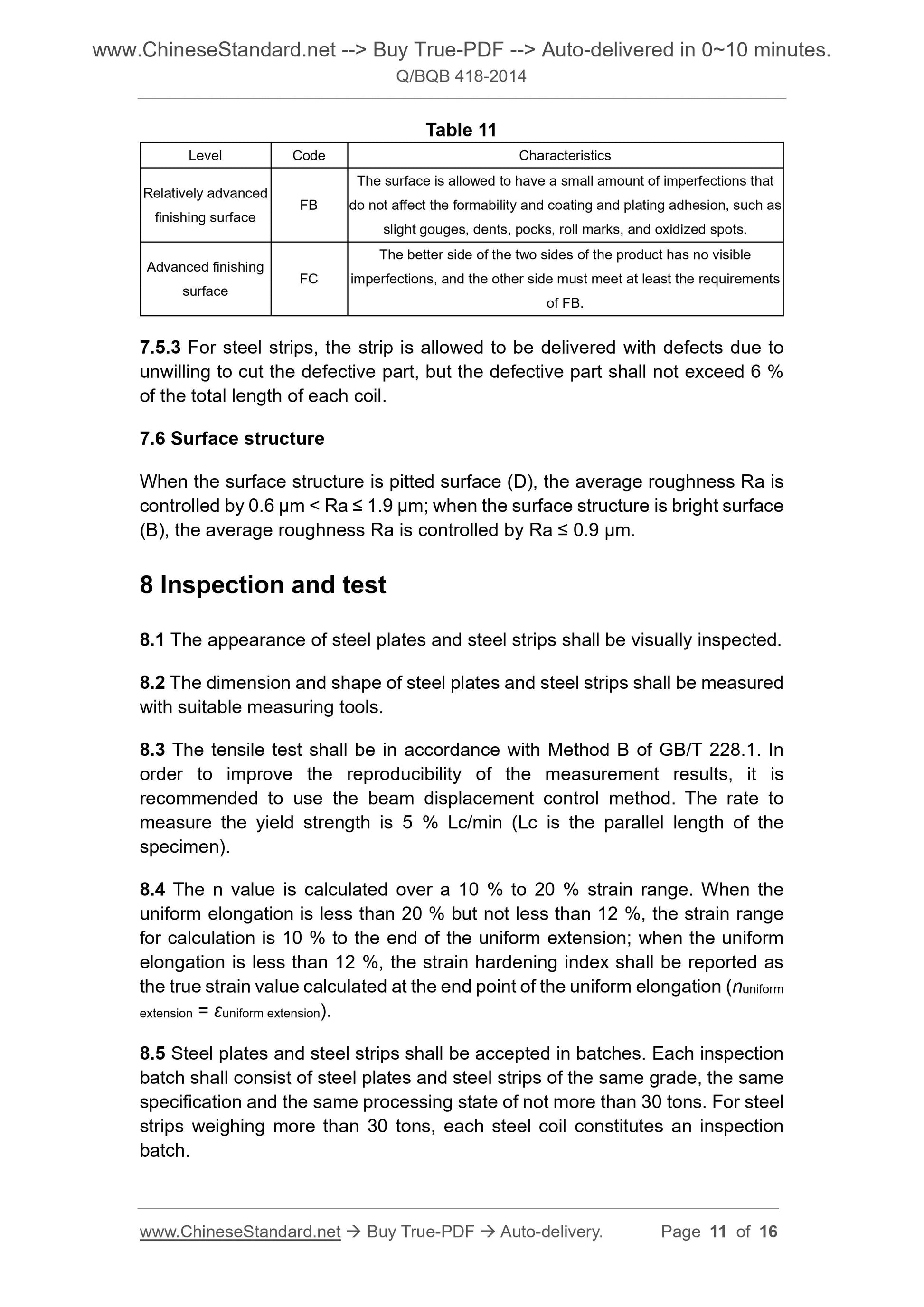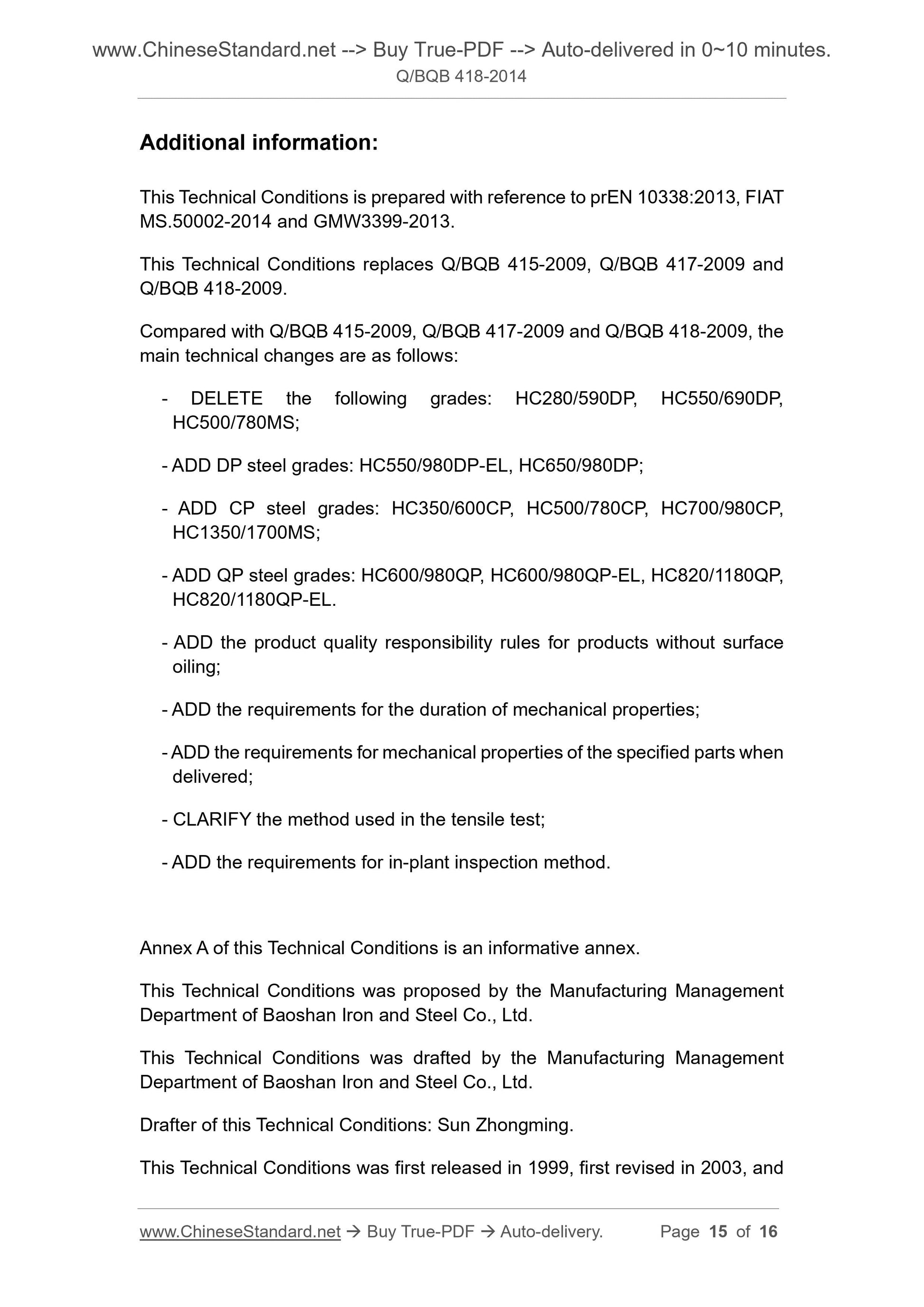1
/
of
6
PayPal, credit cards. Download editable-PDF and invoice in 1 second!
Q/BQB 418-2014 English PDF (Q/BQB418-2014)
Q/BQB 418-2014 English PDF (Q/BQB418-2014)
Regular price
$320.00
Regular price
Sale price
$320.00
Unit price
/
per
Shipping calculated at checkout.
Couldn't load pickup availability
Q/BQB 418-2014: Cold-rolled advanced high-strength steel plate and strip
Delivery: 9 seconds. Download (and Email) true-PDF + Invoice.Get Quotation: Click Q/BQB 418-2014 (Self-service in 1-minute)
Newer / historical versions: Q/BQB 418-2014
Preview True-PDF
Scope
This Technical Conditions specifies the terms and definitions, classification andcode, dimension, shape, weight, technical requirements, inspection and test,
packaging, marking and inspection documents of cold-rolled advanced high-
strength steel plates and steel strips.
This Technical Conditions applies to cold-rolled advanced high-strength steel
plates and steel strips with a thickness of 0.50 mm ~ 2.3 mm (hereinafter
referred to as steel plates and steel strips) produced by Baoshan Iron and Steel
Co., Ltd.
Basic Data
| Standard ID | Q/BQB 418-2014 (Q/BQB418-2014) |
| Description (Translated English) | Cold-rolled advanced high-strength steel plate and strip |
| Sector / Industry | Chinese Industry Standard |
| Classification of Chinese Standard | QBQ |
| Word Count Estimation | 9,947 |
| Issuing agency(ies) | Baoshan Iron and Steel Co., Ltd. |
Share
